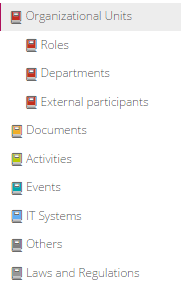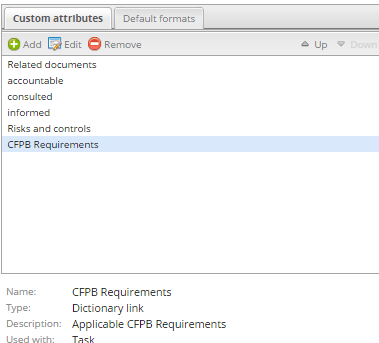The Metadata of Compliance
Some activities, such as evaluating a customer’s credit, can involve multiple laws and regulations. In addition, a regulation can dictate specific actions, wording, or a sequence of activities along with documents and standard agreements. Often, specific data elements are dictated within the conduct of an activity. Regulations also dictate the logic of a compliance topic — the type, size, or condition of a regulated situation. These elements – the activities, reports, and logic — are the controlling data of the regulations and when the wording, logic, or sequence changes, the business must be able to identify the processes and activities that are impacted.
For these reasons, it is increasingly important for regulated industries to create a precise map of their processes and connect this map to relevant regulations. This is important for two reasons:
- Processes and activities that are impacted by changes to regulations can be quickly identified and procedures and reporting accommodated
- Regulators can be shown substantial documentation with supporting data to demonstrate compliance
Because of its unique ability to connect processes, activities, and decisions to a law or regulation, many Signavio customers use the Signavio Platform for compliance.
Connecting Models and Regulations the Correct Way
The Signavio Platform models processes and decisions using the OMG standard Business Process Modeling Notation (BPMN) and the Decision Model and Notation (DMN). In addition to supporting these standards and their attributes, Signavio can customize the attributes associated with processes, activities, or decisions (or any other BPMN/DMN attribute).
Using customized attributes can assist businesses in preventing, monitoring, and reporting on their regulatory compliance. Below, we'll walk through one example of how customized attributes can help.
A Dictionary of Laws can Lead to Regulatory Compliance
There are a number of approaches for mapping regulations to process and activities in the Process Editor and decisions in the Decision Manager. For instance, the Signavio Dictionary can contain a sub-dictionary of Laws and Regulations with a dictionary entry item for each regulation. In this approach, each entry can hold a significant amount of searchable text. A special, custom attribute of a list of dictionary terms can be associated with a process, attribute, or decision. After the process is mapped, the dictionary item can be connected to the respective task.
Connecting to the Process and the Activity
For instance, if you are working in the banking industry and focusing on mortgages, you might create a customer task and process attribute called the CFPB Requirements, based on the CFPB regulations in the United States. Each law that applies to or is mandated to the activity would be listed in the attribute. These attributes appear, nearly automatically, on a processes report and in the portal. This allows you to easily update a process based on new regulations and connect it to an activity.
The Signavio platform provides a collaborative environment for discovering processes and decisions. Even more power is afforded through the ability to extend the model with custom attributes. These extensions increase the number and types of needs that Signavio can service – and regulatory compliance is just one of them.
Interested in seeing how your company can use Signavio to meet compliance demands? Sign up for a free 30-day trial here.



